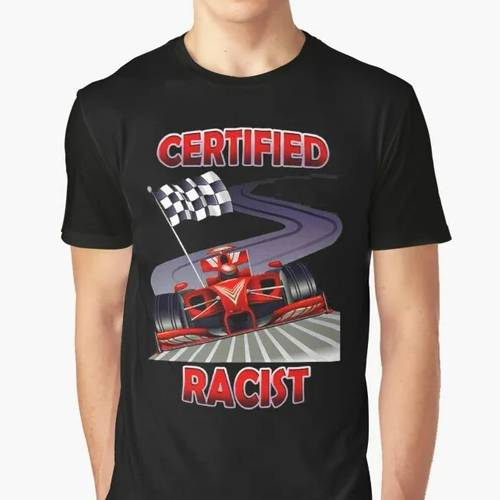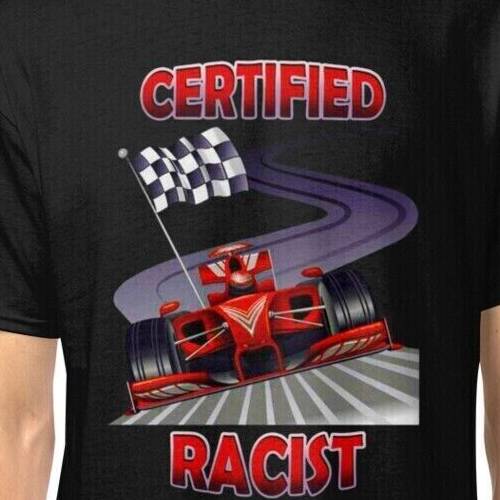Controversial Fashion: Why the Certified Racist Shirt is Making WavesThe fashion industry has always served as a platform for inpiduality and daring declarations. Clothing has always been a potent medium for social, political, and cultural remarks. But other ideas have gone too far, igniting fury and contentious discussions. Among these, a shirt design has lately drawn notice for its graphic content, igniting discussions on social responsibility, free speech, and the morality of contemporary fashion. This article explores the debate surrounding the Certified Racist Shirt and explains why it has become a contentious issue in the fashion industry.1. Provocative Fashion Statements' AscentClothing has become a vehicle for ideas and conversation in recent years, thanks to the efforts of independent designers and businesses. Wearing "fashion with a message" has become increasingly popular, ranging from slogan-driven clothing that raises awareness of significant topics to protest T-shirts that support social movements. However, some designs straddle the line between insensitivity and freedom of speech, and not all messages are favorably received by the general population.
1.1 Fashion's Freedom of ExpressionFashion allows some people to express their opinions openly, which has long been a mirror of cultural values. The contentious shirt has sparked a discussion on where to draw the line between offensive content and free speech. Critics view fashion as an example of transgressing moral standards for financial gain, while supporters contend that it is an art form and a freedom of expression. This shirt's controversy concerns the conflict between social duty and artistic freedom.

The comfortable fit makes this shirt a go-to for daily activities
2. Why People Are Paying So Much Attention to the Certified Racist TeeThis shirt design's explicit and controversial content makes it appealing—and what causes a reaction. Unlike everyday statement clothing that quietly suggests opinions or ideals, this design does not hold back from pushing limits. The shirt immediately gained attention from the public, influencers, and fashion critics for its frank treatment of delicate and pisive subjects.
2.1 Amplification on Social MediaThe shirt has gained much attention, thanks mainly to the digital era. Postings and conversations on social media sites like Instagram, Twitter, and TikTok have increased, with postings either supporting or criticizing it and hashtags trending. Social media catalyzes today's linked world, disseminating information—and controversy—virtually instantaneously. This amplification has only intensified the argument, which has increased participation and sparked inquiries about the morality of such designs.
2.2 The Function of Fashion Critics and InfluencersPublic opinion is significantly shaped by influencers and critics, particularly in the fashion industry. While some influencers support the clothing, saying it is a protest against social conventions, others condemn it for spreading harmful ideas. On the other hand, opinions among fashion writers have been split on whether this kind of clothing is a valid creative statement or a tactless effort to capitalize on controversy. As consumers turn to critics and influencers for advice on understanding the shirt's meaning, this disagreement has only increased its mystery.
3. The Moral Conundrum: When Fashion Goes Too FarAlthough provocative apparel is nothing new, the morality of the
Certified Racist T Shirt presents unique issues. Many people think clothing that explicitly encourages harmful material differs from edgy fashion. The shirt's daring design decisions defy expectations and spark a conversation about fashion responsibility. Should there be restrictions to preserve public sensibilities, or should brands be permitted to create and market such designs?
3.1 Effect on the Image of the BrandThis debate impacts the sales of the garment and the standing of the firms that sell it. Calls for boycotts have been made in response to criticism of certain businesses that have sold or displayed the shirt. This kind of bad press may severely impact a company's reputation, especially in a market where customers are becoming increasingly concerned about business ethics.
3.2 Cultural and Legal ConsequencesLegal professionals and cultural analysts have also discussed the shirt's possible ramifications. This design is under legal examination, as certain countries have laws against apparel that promote hatred or prejudice. Notable cultural ramifications result from this shirt's discussion of what constitutes appropriate behavior in a culture that celebrates tolerance and persity.
4. Public Response: pergent Views and Intense DiscussionsStrong feelings on both sides have characterized the public's reaction to the clothing. While some consider it hurtful and disrespectful, others consider it a daring statement against society's hypocrisy. There are many perspectives, and each side has its arguments. This section will cover the many viewpoints of the public, providing insight into the nuanced dynamics of opinion that this shirt has sparked.
4.1 Upholding Freedom of ExpressionProponents contend that the shirt raises awareness of social concerns and is an important, albeit contentious, message. They argue that the shirt is an example of questioning the current quo and that fashion shouldn't avoid touchy subjects. According to this perspective, fashion should challenge conventions and spark ideas, even if doing so offends certain people.
4.2 An Appeal for Conscientious FashionOpponents counter that the shirt's message insults many people and goes too far. Regardless of creative intent, they contend that fashion should refrain from endorsing notions that may offend or cause harm to particular populations. Critics push for more conscientious fashion choices, where designers consider how their statements could affect society.

Great for layering under jackets or cardigans during colder months
5. Trends and Forecasts for Controversial FashionWhat is the future of provocative clothing, considering how quickly the criticism around the shirt spreads? The limitations within which these comments are expressed may change, but the trend of contentious clothes is unlikely to go away. To strike a balance between boldness and respect, brands and designers may start concentrating on developing statements that elicit thinking without hurting social or cultural groups.
5.1 Possible Impact on Standards in the Fashion IndustryThe controversy surrounding this shirt might result in changes to the industry as more companies enact rules governing the messaging that appears on their goods. To maintain artistic freedom and promote a culture of responsibility, fashion businesses, and shops could consider establishing rules that forbid designs that encourage hatred or objectionable material. Additionally, companies may be prompted to reconsider their strategy for provocative fashion due to customers' rising concerns about brand ethics.
5.2 Responsibility of Consumers and the Function of AdvocacyConsumers also shape the future of fashion via
Certified Racist F1 Shirt. Public opinion and advocacy organizations can pressure businesses to avoid creating offending or dangerous products. Customers may choose more ethically conscious labels as they become more aware of the ramifications of contentious clothing. This change may make a fresh fashion trend that balances inpiduality and societal awareness.
The debate surrounding the shirt draws attention to the intricate relationship between ethics, fashion, and freedom of speech—the limits of what may be spoken in public change along with society. In addition to being an item of apparel, this shirt has drawn attention to more general issues of cultural sensitivity, accountability, and the ability of fashion to shape public opinion. It remains to be seen if the contentious clothing trend will persist or change to a more balanced message. One thing is sure, though: fashion will always serve as a mirror reflecting the opinions and ideals of its era.









